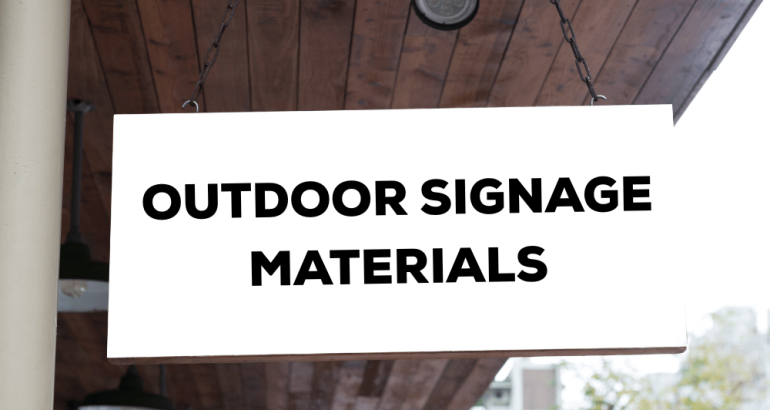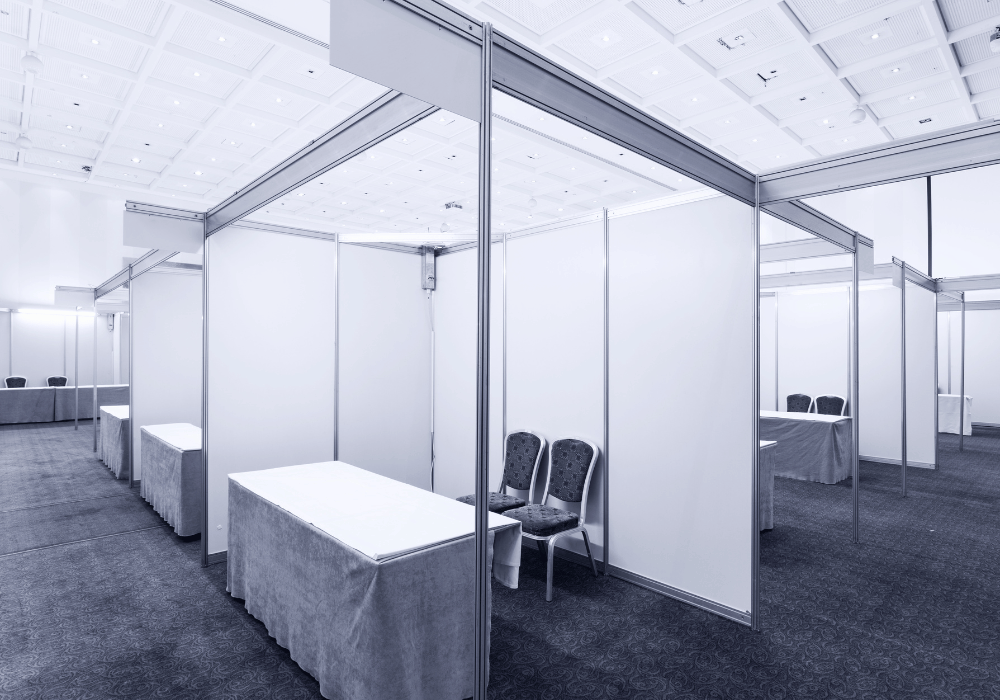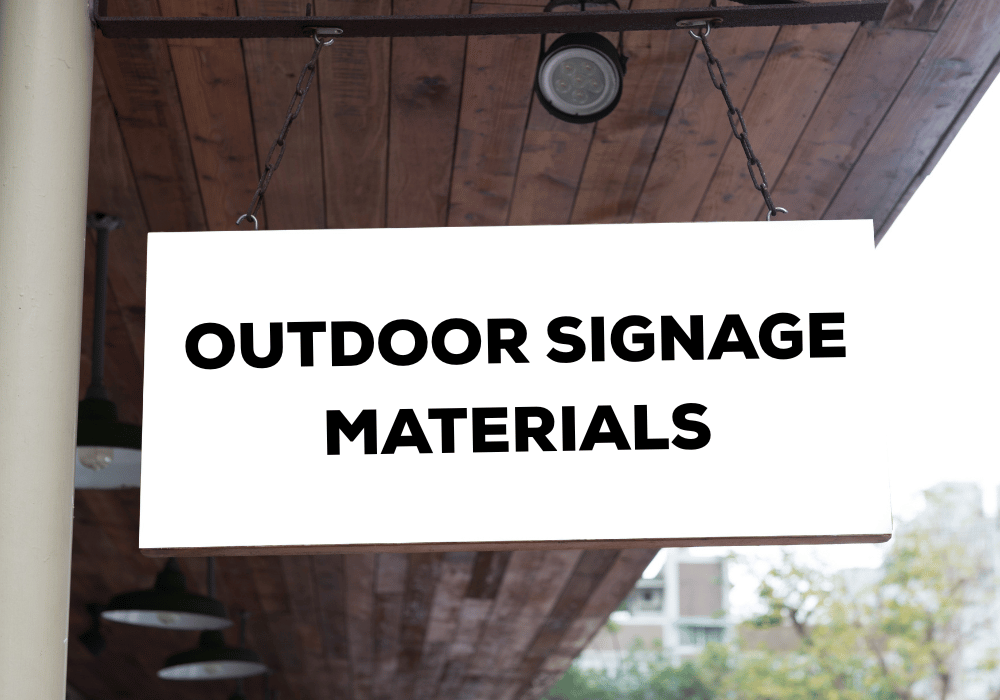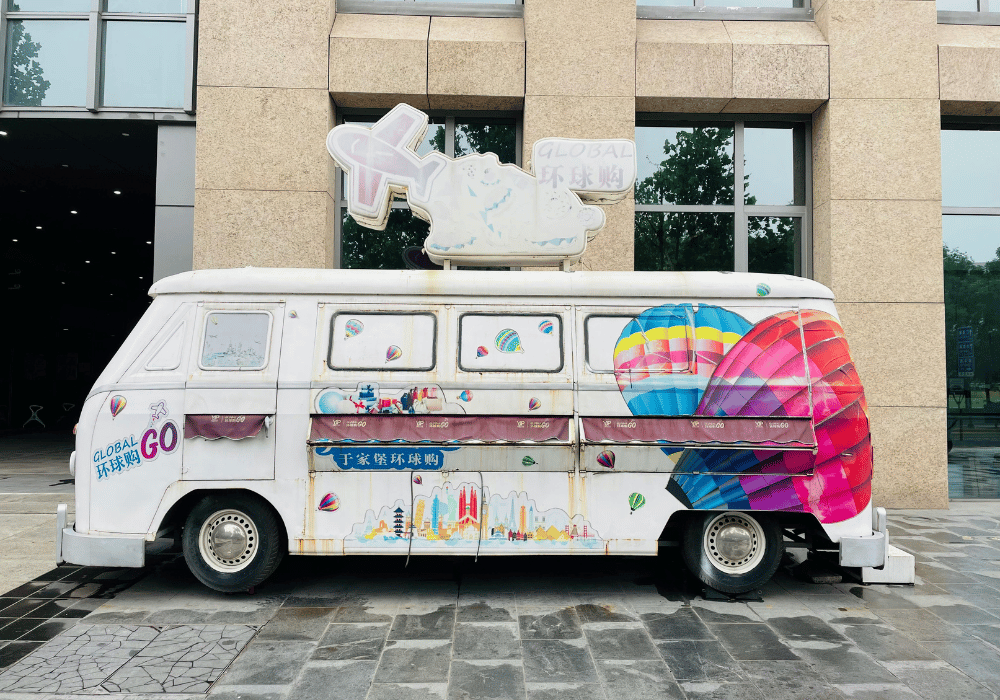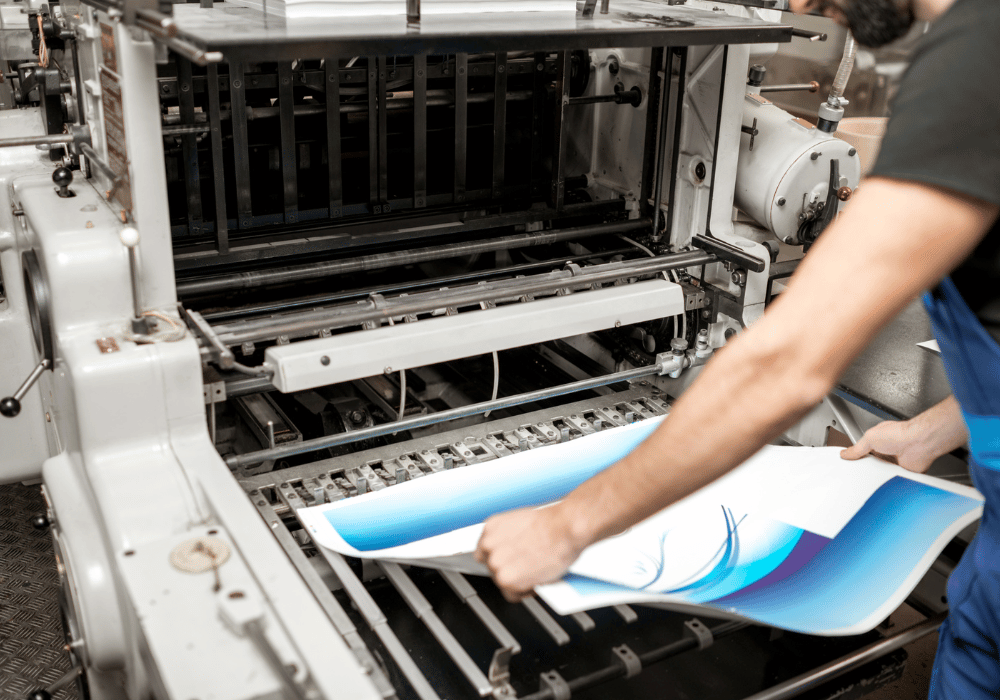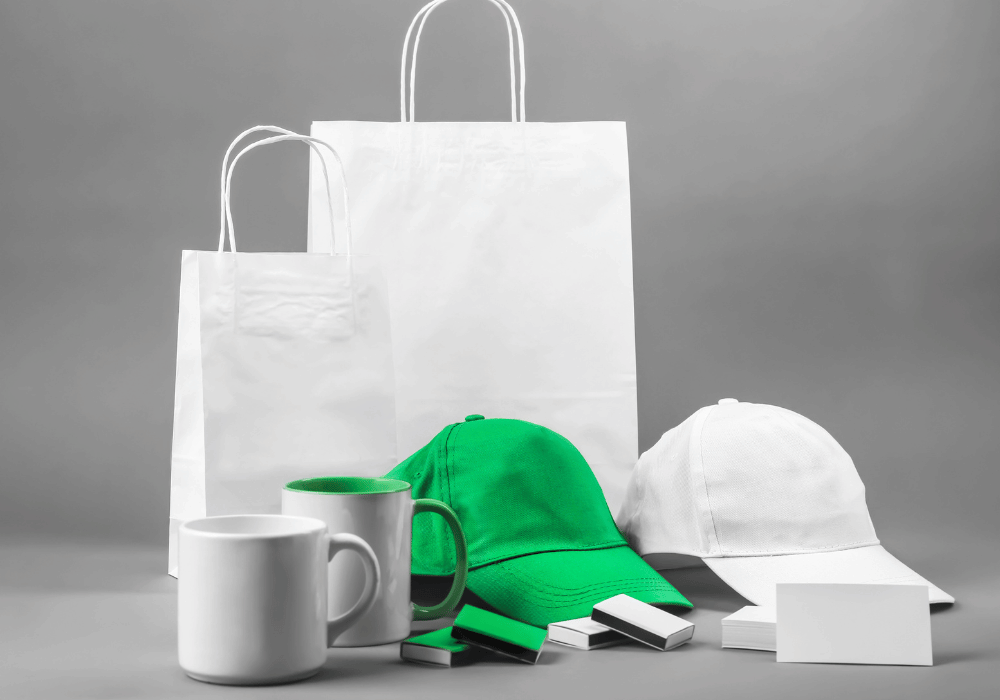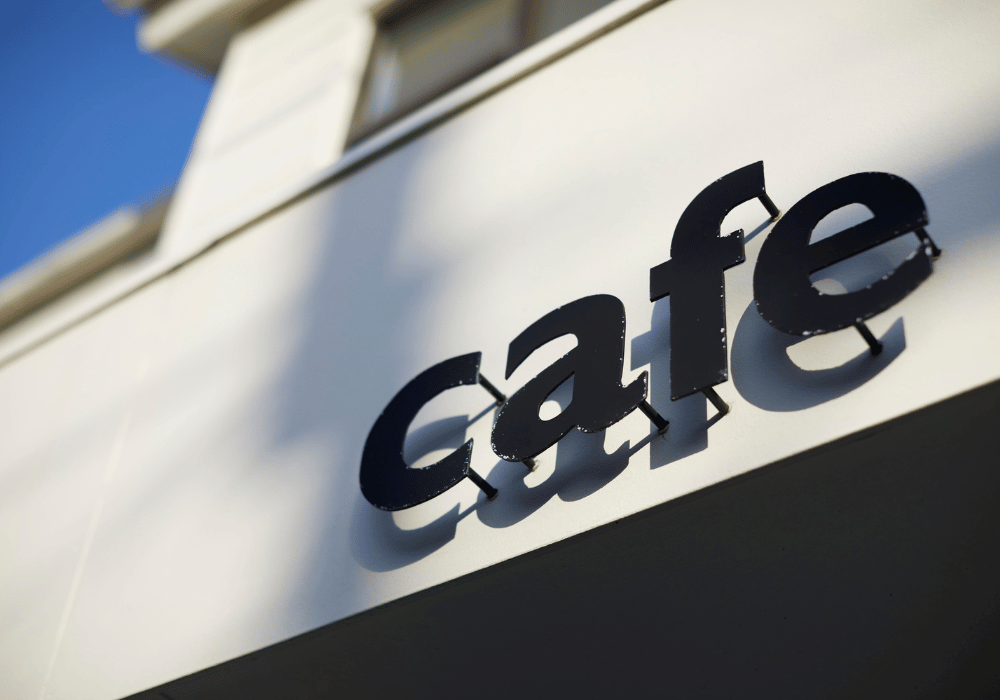Outdoor signage serves as a crucial branding and information tool, but selecting the right material can be challenging, especially when faced with unpredictable Canadian weather. From torrential rains to freezing winters and scorching summers, your signage needs to withstand diverse and extreme conditions while maintaining its visual appeal and functionality. Choosing the right material is key to ensuring durability and effectiveness over time. Here’s a guide to help you choose the most suitable outdoor signage material for use in Canada’s climate.
Durability in Extreme Cold and Freezing Temperatures
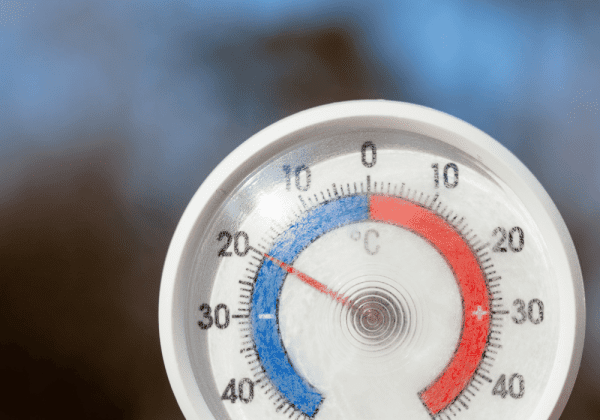 Canada’s long, harsh winters can wreak havoc on outdoor signage. Materials that cannot endure freezing temperatures often crack, warp, or become brittle, resulting in costly replacements. This makes durability a top priority for long-lasting signage.
Canada’s long, harsh winters can wreak havoc on outdoor signage. Materials that cannot endure freezing temperatures often crack, warp, or become brittle, resulting in costly replacements. This makes durability a top priority for long-lasting signage.
One popular material choice for such conditions is aluminum. Lightweight yet sturdy, aluminum resists cracking and holds up well against freezing temperatures. Its rust-resistant properties make it ideal for outdoor use through Canadian winters. Another option is PVC, which boasts excellent impact resistance even in freezing climates. It can withstand heavy snowfalls and icy winds without buckling or deteriorating quickly.
Additionally, ensure the material you choose pairs well with UV-protective coatings. Harsh winter sunlight reflecting over snow can fade colours and graphics. Opting for signage with laminated prints or UV-blocking finishes provides an extra layer of protection.
Resilience Against Heavy Rain and Humidity
Canadian weather varies significantly depending on the region, but heavy rain and high humidity are common in many parts of the country. Materials that absorb moisture can degrade quickly, resulting in mold, warping, or fading. To keep your signage looking professional year-round, moisture resistance is crucial.
Acrylic is a solid choice for areas prone to rain. Its glossy finish is water-resistant, preventing water infiltration that might damage sign structures or designs. Additionally, aluminum composite materials (ACM), which feature a solid plastic core sandwiched between two aluminum sheets, provide superior rigidity and water resistance. ACM is also lightweight, durable, and highly customizable.
For mounting, ensure the fastening system is also waterproof. Corrosion-resistant frames, brackets, or screws made from stainless steel help secure your signage while preventing damage caused by constant exposure to moisture. This combination ensures a seamless and weatherproof display.
Wind-Resistant Materials for High-Speed Gusts
Wind resistance is a frequently overlooked but essential characteristic for outdoor signage in Canada. Coastal regions and open prairies experience strong gusts that can loosen or destroy improperly designed signage solutions.
For high-wind areas, materials like aluminum composite or polycarbonate are excellent options. Aluminum composite is durable yet lightweight, which helps it resist bending under high winds. Polycarbonate, on the other hand, can flex slightly to withstand stronger forces while remaining shatterproof. These materials are known for their rigidity and structural integrity, making them ideal for windy circumstances.
The installation process also plays a significant role in wind resistance. Secure signage tightly using heavy-duty mounting hardware or reinforced frames to prevent wobbling or detachment. When combined, wind-resistant materials and sturdy installation ensure your signage remains intact year-round.
UV Resistance for Year-Round Sunlight Exposure
While many people focus on cold and rain as the major weather challenges, Canadian summers bring intense UV exposure that can fade outdoor signage over time. UV rays not only dull colours but can also weaken certain materials, leading to cracking or peeling.
Corrugated plastic, often used for temporary signs, may not perform well under prolonged sunlight. Instead, opt for weather-resistant substrates like high-density urethane (HDU) or acrylic, which maintain their appearance over time. HDU is especially prized for its durability and paint adherence, ensuring that colours and designs stay vibrant under UV exposure.
Protective coatings are another critical factor in UV resistance. Adding a UV-protective laminate or finishing sealant to your signage helps guard against fading and degradation while extending the life of the graphics. For businesses that rely on bold visuals to catch attention, this small addition can make a significant difference.
Longevity and Cost-Effectiveness for Year-Round Use
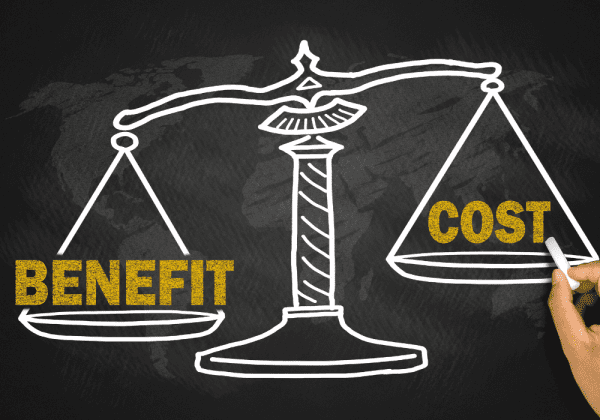 When investing in outdoor signage, balancing longevity and cost-effectiveness is essential. While some materials may be more affordable upfront, their susceptibility to wear and tear means higher replacement or repair costs down the line. For year-round Canadian use, prioritize materials that give you the most value over time.
When investing in outdoor signage, balancing longevity and cost-effectiveness is essential. While some materials may be more affordable upfront, their susceptibility to wear and tear means higher replacement or repair costs down the line. For year-round Canadian use, prioritize materials that give you the most value over time.
PVC foam board offers a good balance of cost and durability, particularly for smaller signs that don’t face excessive strain. However, for maximum longevity, high-quality aluminum or aluminum composite materials are hard to beat. Their resistance to rust, UV, and temperature fluctuations ensures years of use with minimal maintenance.
Another option is weather-treated wood. Though less common for modern signage, weather-treated cedar or redwood can offer a timeless aesthetic combined with durability. Keep in mind that wooden signs require regular upkeep to retain their charm and functionality.
Working with signage professionals during the selection process can also improve cost efficiency. Experts can recommend the right materials tailored to your location and intended use, saving you from unnecessary expenditures or mistakes.
Environmental Considerations for Sustainable Signage
Sustainability is becoming an increasingly important consideration for businesses, and outdoor signage is no exception. Selecting eco-friendly materials not only minimizes environmental impact but also aligns your brand with modern values of sustainability.
Recycled aluminum is one such sustainable material, offering all the benefits of traditional aluminum with a significantly smaller carbon footprint. It’s also fully recyclable at the end of its life, supporting circular practices. Similarly, high-density polyethylene (HDPE) made from recycled plastics provides excellent durability while promoting eco-consciousness.
For businesses looking to amplify their environmental commitment, consider incorporating solar-powered lighting solutions into your signage. Solar panels reduce energy dependence while keeping your message visible after dark, further enhancing your brand’s sustainable ethos.
Customization Options to Meet Aesthetic Goals
While functionality is essential, the visual impact of your signage should never be ignored. Various materials offer different customization options, ensuring your sign is not only durable but also eye-catching.
Aluminum composite panels can be custom-cut into shapes or sizes that suit creative branding efforts, while HDU can mimic the look of carved wood for a rustic appeal. Vinyl overlays or digitally printed graphics allow for vibrant, high-resolution designs that adhere to materials like acrylic or aluminum without compromising durability.
Ensuring that your signage blends both form and function helps you make an impression on passersby while maintaining resilience against Canadian weather. Work with a signage vendor who can tailor material and design choices to reflect your brand identity seamlessly.
Selecting the right outdoor signage material for Canadian weather is all about understanding the unique challenges your location presents. From freezing winters and heavy rains to intense UV exposure and high winds, you need a solution that balances durability, cost-efficiency, and visual appeal. By choosing materials like aluminum, acrylic, and composites and incorporating protective coatings or strategic installation, your signage can remain functional and attractive for years to come. At Artcal Graphics & Printing, we specialize in outdoor signage solutions designed to thrive in Canada’s diverse climate. Contact us today to explore how we can help your brand stand out with signage built to last.

